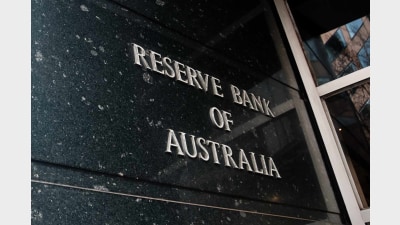Improving members' tax outcomes


It is well understood that one of the aims of the Your Future, Your Super (YFYS) performance test is to highlight, and over the long-term, remove products that fall short of their specific APRA-calculated after tax benchmark from the superannuation fund product landscape.
Given tax is one of the largest expenses associated with investment activities, and that there are many different settings, options and processes a fund can adopt to determine their tax outcomes, it’s encouraging to see the Australian Prudential Regulation Authority (APRA) acknowledge this through its benchmark requirements.
It’s equally encouraging to see many funds re-assessing the possible opportunities to manage tax outcomes, all with the aim of delivering improved member returns.
Whilst tax-aware investment management is not a new concept for many funds, the YFYS performance test requirements have heightened the interest of some, as they work to ensure “unnecessary tax leakage” is not a contributory factor to their possible failure of the YFYS annual performance test.
In terms of the tax-management opportunities available to funds, they are many and varied, and could include:
1. Reviewing the tax methodologies, parameters, and processes in place with their custodian - including consideration of the most appropriate capital gains tax parcel selection methodology and the use of tax propagation; use of the 45-day holding period rule or carve out methodology; and reviewing foreign taxes and chasing foreign tax reclaims.
2. Ensuring asset holdings are structured tax effectively - for example, consideration of the tax benefits associated with investing directly, via trusts or other structures, as well as segregating pension from accumulation assets.
3. Providing investment teams with daily tax data - information that can be consumed by a front office trading platform or other data management solution, to allow analysis of the expected tax outcomes if a stock, portfolio, or percentage of a portfolio was to be sold.
4. Undertaking off-market buyback analysis - to ensure the after-tax value of participating in an off-market buy-back is evaluated and understood.
5. The front office’s use of pre-trade tax analysis software - to manage franking credit and capital gains tax leakage as part of the investment decision process, including:
- At a mandate level by fund managers to understand the tax implications of their proposed trades from the perspective of the fund as a whole;
- At a whole-of-fund level to analyse the tax impact of disposing of a particular stock across the entire fund, for example for ESG or other reasons; or,
- When undertaking a transition or as part of successor fund transfer, to ensure any asset disposals are undertaken in the most tax-effective way.
6. The use of ‘buy/sell trade netting’ solutions - considering processes and solutions that net ‘buy and sell trades’ at a fund level before they are put to market, ensures unnecessary capital gains outcomes are not triggered - and for Australian equity holdings - that franking credits are not lost. This approach also enables a fund to maintain its historically acquired ‘discounted’ parcels, thereby reducing future income tax liabilities, as well as generating immediate savings on brokerage costs.
7. Sourcing after-tax benchmarks to set manager performance expectations - in this industry it is well understood that “what gets measured gets managed”. Whilst Australian equity after tax benchmarks are commonplace, with other types of assets representing a growing proportion of many funds’ holdings, more and more funds are now sourcing global after-tax benchmarks, as well as more bespoke after-tax benchmarks to assess managers’ performance. The process to establish these benchmarks and share them with managers ensures all parties are clear on their expectations to derive returns in line with members’ best interests.
8. Obtaining product level after-tax benchmarks - these benchmarks look to replicate the underlying asset mix of a funds’ products and apply the specific tax rates legislated in the YFYS regulations. Whilst they are a relatively new concept in the market, they provide funds with an indication of the performance hurdle APRA will be measuring them against.
9. Undertaking post-trade tax reporting and analysis and remunerating managers on an after-tax basis - continuing the theme of ‘what gets measured gets managed’, funds that source after-tax benchmarks also typically measure the actual after-tax outcomes. This can be done in line with the underlying benchmark and at a manager/ portfolio level, at an asset class level, or, at a product level.
10. Embedding an end-to-end tax platform for whole of fund tax analysis and management - with many funds now having dedicated tax and investment resources focused on tax analysis, they are similarly seeking data by way of a “tax books of records”. Such data would facilitate the analysis of specific tax information, as well as enabling funds to forecast future tax outcomes/ scenarios, whilst enhancing their governance processes and being able to review and correct source data on a real-time basis. The unit pricing ‘tax true up’ process could also be undertaken in a more robust and timely manner. As additional products are assessed through the APRA performance reporting process, funds will have greater confidence that the tax balances that are allocated in their return calculations are both equitable from a member perspective, but not a reason for them to ‘fail’ their performance test.
Many funds have been on a 'tax awareness' journey for years, driven by several possible factors including:
- Their own appreciation of the value of ‘tax alpha’ - which can range from 5bps to 200bps;
- The SIS requirements that require trustees to formulate, review regularly and give effect to an investment strategy for the whole of the entity, and for each investment option offered by the trustee in the entity, having regard to … the expected tax consequences for the entity in relation to the investment covered by the strategy;
- The findings of the 2018 Productivity Commission review, which noted that tax aware management is not prohibitively difficult to implement; or,
- The fact that many members that move from the APRA regulated products space to the SMSF space quote efficient tax management as being one of the primary drivers.
What is clear is APRA’s adoption of after-tax benchmarks for its YFYS performance test outcomes are providing a further reason for funds to focus on tax outcomes for the benefit of their members. Whilst the optimal program would see input from cross disciplinary teams - spanning the front office, investment operations, tax, data, technology, and compliance and performance - historical analysis has proven that coming together to establish a fund-wide tax awareness framework for funds that have embedded even one or two of the solutions noted above, has resulted in better outcomes for members.
Even the slightest focus on optimising tax outcomes yields improved member returns, and not only is this in-line with members’ best interests, but going forward, could be a reason for a funds’ longer-term ability to be able to retain and serve its members.
Elly Grace is client relationship manager and tax SME at GBST.
Recommended for you
High risk, high return assets will become dangerous options for superannuation funds under the Federal Government’s planned $3 million superannuation changes, writes Brad Twentyman.
Economic policy can no longer ignore the macroeconomic impacts of Australia's superannuation system and the emerging policy implications, writes Tim Toohey.
In an age where climate concerns and social consciousness dominate headlines, it’s no surprise that investors are increasingly seeking investments that align with their values, writes Simon O’Connor.
How profit-for-member superannuation funds can embed 'commerciality with a heart' and marry a member-first culture with commercial outcomes.














Add new comment